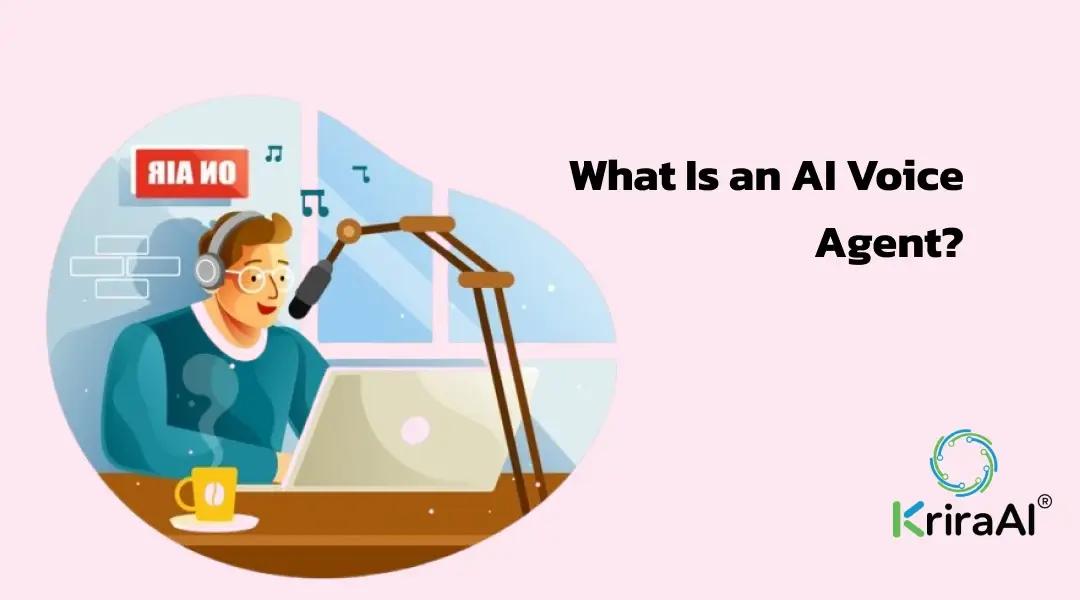How to Optimize Your AI Voice Agent for Better User Experience
Let me guess—you rolled out an AI voice agent, ran some initial tests, maybe even got a few wow moments from stakeholders. But once it went live, the real-world feedback? Not so flattering.
I’ve been there. I've helped build AI voice bots that sounded great in theory—and failed miserably when real people tried to use them.
Turns out, the tech isn't the problem. It's the user experience.
And that’s where most teams get it wrong.
Why AI Voice Agents Are Taking Over Business Communication
Businesses are waking up to a truth: voice is the fastest, most natural interface we have. And with generative AI now powering human-like voice agents, the floodgates have opened.
From customer support lines to voice-enabled banking to internal operations, AI-powered voice assistants are now replacing outdated IVRs and menu hellscapes. Why? Because they promise real-time interaction, scale, and 24/7 availability.
But all that potential goes down the drain if the experience sucks.
What Is an AI Voice Agent?

An AI voice agent is a voice-based virtual assistant trained to understand, interpret, and respond to human speech using natural language understanding (NLU) and speech synthesis.
Key Features of a Modern AI Voice Agent:
Real-time voice recognition and response
Contextual memory (it "remembers" what you said 30 seconds ago)
Personalization (calls you by name, knows your history)
Multilingual & accent-adaptive responses
Sentiment-aware feedback loops
AI Voice Agent vs. Traditional IVR
Let’s be blunt: IVRs are dumb. They’re just glorified decision trees. “Press 1 for billing” isn’t a conversation—it's a frustration.
A well-built AI voice agent, on the other hand, adapts. It listens. It doesn’t force users to memorize options or wait for a beep.
Why User Experience Matters in Voice AI
Impact on Customer Satisfaction
You can have the most advanced AI model under the hood, but if your agent interrupts users, mispronounces names, or loops responses—congratulations, you’ve just annoyed someone into never coming back.
Voice UX and Brand Perception
Your voice bot is your brand’s voice. Literally. A stilted, robotic interaction? That’s what your customers now associate with you. Meanwhile, a smooth, helpful, human-like voice agent builds trust—fast.
10 Proven Strategies to Optimize Your AI Voice Agent

1. Design for Natural Conversation Flow
People don’t talk in commands—they talk in context. Build flows that mimic how humans actually speak. Anticipate follow-ups.
2. Use Context Awareness and Memory
Don’t make users repeat themselves. Carry context from one question to the next. Yes, it’s harder. But it’s what makes or breaks trust.
3. Optimize Latency and Response Time
Even a 1.5-second lag feels awkward in voice. Use faster inference engines. Trim model bloat. Reduce latency in your AI voice agent or risk losing users to silence.
4. Personalize Voice Interactions with AI
If someone’s interacted before, don’t treat them like it’s the first time. Use stored preferences. Adaptive language. Tone matching.
5. Support Multiple Languages and Accents
India. Africa. LATAM. Global customers mean global language support. Accent variation is not a “nice-to-have”—it’s a basic requirement for reach.
6. Implement Real-Time Sentiment Analysis
Voice tone holds emotion. Angry? Confused? Detect it. Adjust accordingly. Route to human support if needed.
7. Test with Real Users Regularly
Don’t test in echo chambers. Use live environments. Record sessions. Watch what frustrates, what delights, and what breaks.
8. Reduce Repetition and Friction Points
“Can you repeat that?” is a UX sin. So is looping a response. Handle edge cases better. Build fallback intents.
9. Provide Fallback Options and Human Escalation
AI can’t handle everything. Make it easy to escalate to a human—not buried under 5 levels of prompts.
10. Continuously Train the NLU Model
Natural language understanding degrades if left untouched. Feed it real user interactions. Retrain. Update. Often.
Metrics That Define a Great AI Voice Experience
First-Time Resolution (FTR): Did the user get what they came for—on the first try?
Average Response Time: Under 1 second is ideal.
Sentiment Score: Measure user emotion during interaction.
Escalation Rate: Lower is better—but don’t hide the human option to manipulate this.
Tools and Platforms to Enhance Voice AI UX
Top Frameworks: Rasa, Dialogflow CX, Microsoft Azure Bot Service
Analytics Tools: Voiceflow, Observe.AI, Dashbot
Real-time Feedback: Whisper (OpenAI), Soniox, or KriraAI’s own sentiment layer
Case Study: How Optimizing Voice AI Increased Retention by 35%
One of our e-commerce clients came to us with a "working" voice agent. The problem? Users kept hanging up.
We restructured the conversation flow, added sentiment detection, retrained the NLU on actual support queries, and implemented real-time feedback logging.
Result? Retention jumped 35%. First-time resolution improved by 42%. CSAT climbed from 68% to 87%.
(And no, we didn’t rebuild the whole thing—we optimized what mattered.)
Common Mistakes to Avoid in Voice AI UX Design
Overcomplicated Flows: You’re not writing a screenplay. Keep it simple.
Ignoring Edge Cases: “Sorry, I didn’t get that” isn’t acceptable 5 times in a row.
Lack of Error Handling: Every failure is a moment to gain—or lose—trust.
The Future of AI Voice Agents: UX-Centric Evolution
Emotionally Intelligent Voice Bots
Your voice agent will soon not only understand what users say—but how they feel while saying it.
Multimodal Interfaces (Voice + Visual)
Think voice plus screen. Voice plus gesture. We’re headed toward blended, intuitive AI experiences.
Conclusion
Optimizing an AI voice agent isn’t just about better speech recognition or NLP. It’s about respect.
Respecting your user’s time. Their emotions. Their need for clarity.
I’ve seen brilliant models ruined by bad UX—and clunky models shine with thoughtful design.If you want your AI voice agent to become a competitive advantage—not just another tech expense—make UX your north star.
That’s how you make voice AI work.
FAQs
Poor UX design—specifically, unnatural flows and slow response times.
Ideally, every 2–4 weeks using live user data.
Absolutely. Even simple use-cases like appointment scheduling or order tracking show massive ROI when done right.
Watch real users interact. Observe confusion, tone, and time-to-task.
Yes. We design, build, and optimize AI voice agents tailored to your business needs—with human-like UX baked in.

CEO
